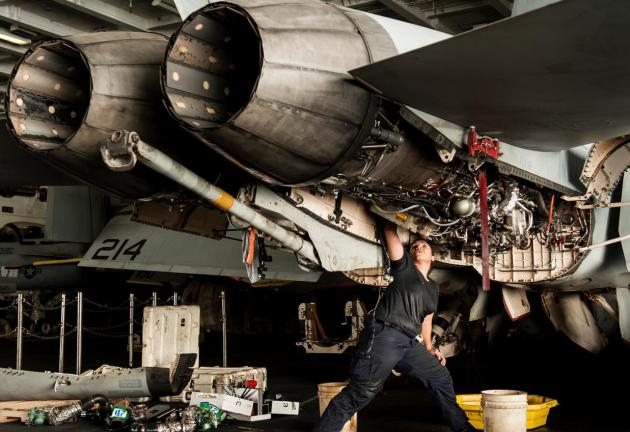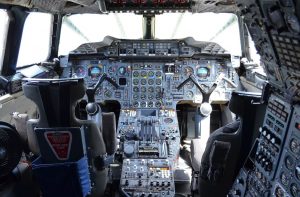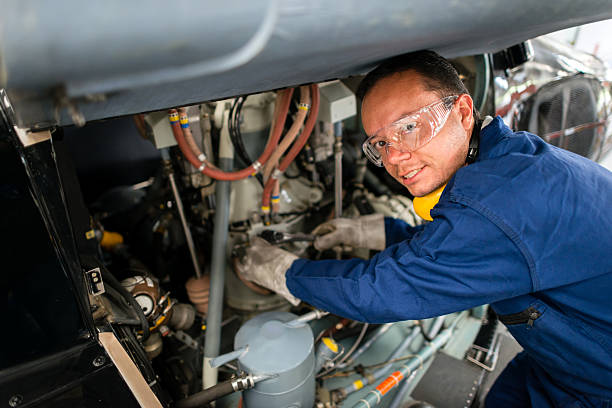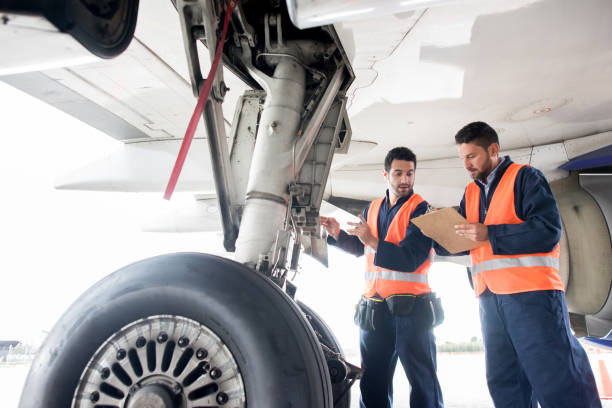What does aircraft maintenance technician training cover?

Aircraft maintenance technicians are responsible for keeping all planes up in the air. They perform inspections, repairs, and replacements of parts like engines, brakes, and landing gear to keep aircrafts safe. Technicians also work on commercial airplanes as well as military jets. Aircraft maintenance technicians must be able to read blueprints or schematics, use hand tools and operate power tools such as drills and saws. They must understand how aircraft systems work because they will need to troubleshoot problems with them.
Some companies will offer flexible work hours and even time off with pay to make the job more manageable for technicians who may be parents or caregivers. The career can also be done remotely if a company will allow it and offers locations outside the hubs of airports and major cities. This type of job allows you to move around and live in different parts of the world because it requires constant traveling from airports that house military jets or commercial flights.
Responsible for the upkeep of an airplane

Aircraft maintenance technicians are professionals who work on the upkeep and repair of airplanes. They may be employed by airlines, private companies, or airports. The technician’s responsibilities include performing tasks such as inspecting and repairing parts of the plane, ensuring that planes meet safety standards, helping to maintain a plane’s weight balance through refueling and loading cargo, and much more. Some technicians specialize in particular areas such as engine mechanics or navigation systems. All aircraft maintenance technicians must hold a Federal Aviation Administration certification to perform their job duties legally. These professionals typically receive on-the-job training from experienced employees before they take on major repairs themselves.
Routine inspections and repairs to ensure that the plane is safe for passengers

The Aircraft Maintenance Technician is responsible for performing routine inspections and repairs to ensure that the planes are safe for passengers. They do so by following a pre-determined checklist of tasks which include inspecting, cleaning, lubricating, repairing, or replacing parts as needed. Most aircraft maintenance technicians work in hangars or hangers but some also perform their duties on the tarmac where they use specialized equipment to move aircraft around.
Checking the electrical system, hydraulic systems, fuel tanks, and more
Aircraft maintenance technicians are in charge of making sure that the aircraft is safe for flight. They do this by doing a thorough inspection of the aircraft and checking it against a checklist to make sure nothing has been missed.
An aircraft maintenance technician needs to have at least a high school diploma, though some employers may require a degree in aviation or engineering from an accredited institution. The pay rate varies from employer to employer but averages around $30 per hour on average. Aircraft mechanics also need experience working with different types of equipment used in the industry before they’re hired by most companies because there are so many pieces of equipment that need specialized knowledge when repairing them. Mechanics usually work 40 hours per week but overtime can be required at times; vacations and paid time off can be earned after a set amount of time working for the company. Aircraft maintenance technicians may be required to travel to work – this is because planes are usually serviced where they’re at instead of being moved.
They also inspect all parts of a plane including its wings, tail assembly, engine, propeller blades

Aircraft maintenance technicians are required to inspect all parts of a plane including its wings, tail assembly, engine, propeller blades. They also make sure that the aircraft is safe before every flight and must be licensed by the FAA.
Aircraft maintenance technicians are required to inspect all parts of a plane including its wings, tail assembly, engine, propeller blades. They also make sure that the aircraft is safe before every flight and must be licensed by the FAA. This certification process includes passing both written tests for airframe knowledge and practical tests in which they demonstrate their skills on an actual airplane or model airplane with various systems turned off so they can show how to troubleshoot them without actually fixing anything. Aircraft Maintenance Technicians typically have at least three years of post-secondary education in an aviation maintenance program.
Some large airports might even require Aircraft Maintenance Technicians to be on call 24 hours a day for emergencies that could arise at any time when the plane is carrying passengers or cargo. They must often work in adverse weather conditions, which may include snowstorms in the winter and extreme heat in the summer. The job can be difficult because they are responsible for maintaining all kinds of aircraft including commercial passenger planes, military jets, private planes, helicopters, gliders, and crop dusters. Aircraft Maintenance Technicians must be able to stand on their feet for long periods while working with heavy tools such as wrenches and screwdrivers.
As well as inspecting landing gear and tires on wheels

Aircraft maintenance technicians can be found on some of the most technologically advanced aircraft in the world. They inspect landing gear and tires on wheels, among other things. The job often requires lifting heavy objects and working with tough materials like metal or fiberglass. Aircraft maintenance technicians need to understand how an airplane works, so they can identify malfunctions quickly. Most airlines require their mechanics to have a four-year degree in aviation mechanics technology from an accredited university program before hiring them as full-time employees, but there are also trade schools that offer programs for those who want to enter this field without having completed college first.
The amount of experience you get depends largely on where you work; at large airports, it’s not uncommon for new hires to start out working on smaller planes that carry less than 50 people. They then learn the ropes by moving up to bigger aircraft with more passengers. The size of an airplane doesn’t have much bearing on the certification requirements, so being able to work your way up is not always an option.
A typical day might include performing tests before takeoff
A typical day might include performing tests before takeoff or during flight to make sure everything is working properly. If you’re the one who checks the airplane’s systems, then your job will be very different than if you’re an air traffic controller. ATCs control all aircraft flying in a particular area of airspace, making sure they stay out of each other’s way and on their given routes. They also work closely with pilots to provide them with weather information and updates about potential hazards along their route. The jobs are so diverse that there are three levels of certification for controllers – trainee, qualified, and certified specialist – which require progressively more experience as well as passing exams on various topics including emergency procedures.
